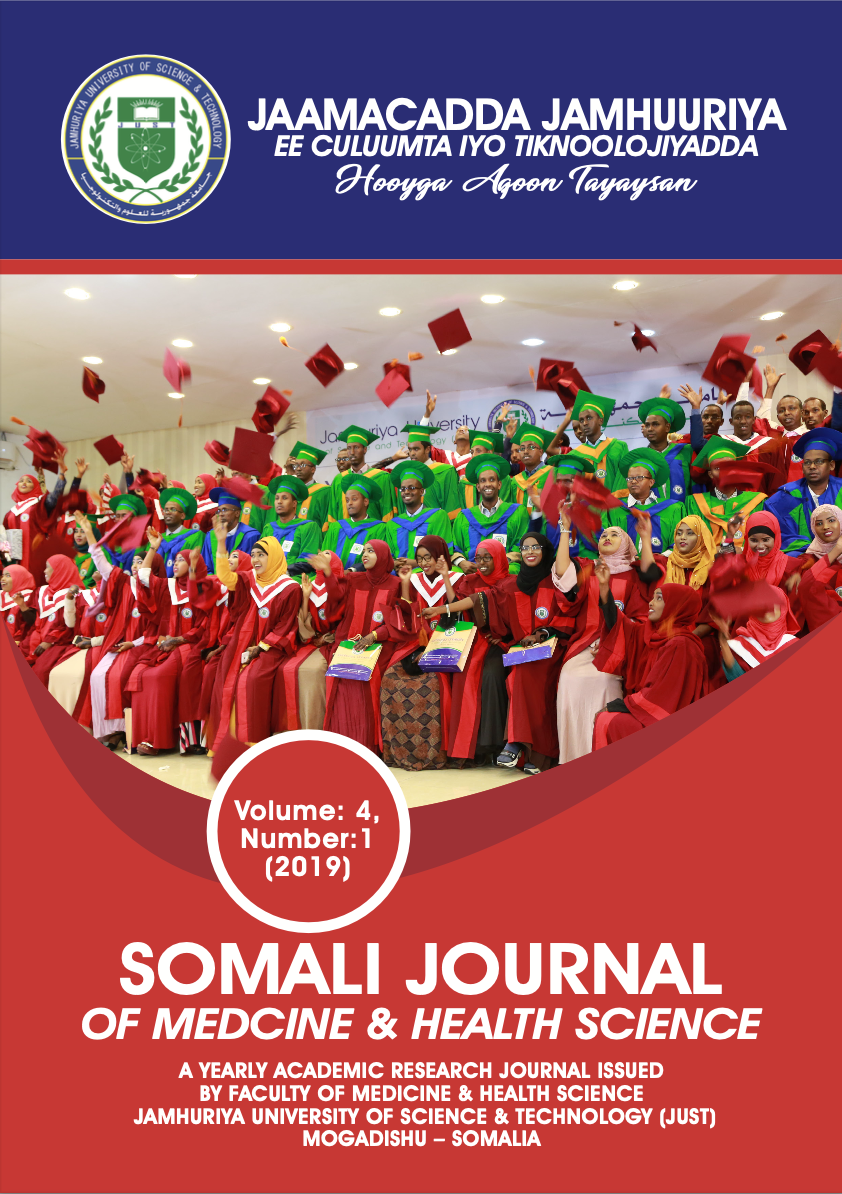Major Factors Contributing and Available Management Options To Late Vaginal Bleeding In Pregnant Women Attending Banadir Hospital
DOI:
https://doi.org/10.59067/afjhms.v4i1.39Keywords:
Late vaginal bleeding, Benadir hospital, Pregnant womenAbstract
The Aim of the study is To identify major factors contributing to late vaginal bleeding in pregnant women attending Banadir hospital And specifically To identify socioeconomic risk factors associated with late vaginal bleeding in pregnant women and finally To find out the most appropriate management of late vaginal bleeding in pregnant women. This study was retrospective study was conducted at Banaadir hospital. The target population of this study was all 3rd-trimester pregnant women with bleeding attended in Banadir hospital from January to May 2019 The study used non probability sampling method. Our study finding placental abruption represented about 38% of all risk factors, followed by placenta previa which contributed about 30% of the causes followed by trauma 14%, uterine rupture 4% infections 8% and others 6%. 84% of study populations were low socioeconomic status, while 16% middle socioeconomic status. The study also finds out that 82% not attending antenatal care centers previously while 18% were visiting antenatal care centers. The study also revealed that 88% of study populations were multipara, the study also found the majority of mothers 32 (64.0%) were between the ages of 26-35 years old. 70% of all study population were managed surgical intervention (caesarean section), where 24% were managed medical treatment and remaining 6% were managed with conservative management. We conclude our study that Maternal morbidly and mortality could be prevented significantly if women and their families recognize pregnancy problems promptly and seek health care. Through this study we found that the risk of late vaginal bleeding was higher among women with less basic education, who belonged to the poorest family, who were older, had higher parity and who did not attend any antenatal care visits. We recommend to provide information, education and communication to pregnant mothers to increase their awareness. To the best of our knowledge, no studies have been conducted in Somalia to identify risk factors for late vaginal bleeding.






